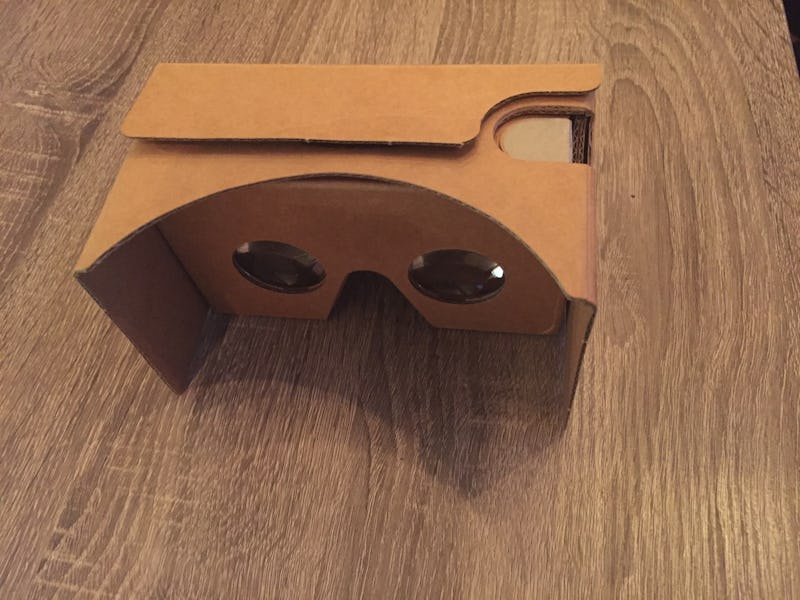New York Times VR Debut Offers Glimpse at the Future of Empathy Journalism
Reaching through your eyes to tug on heartstrings.

In the new virtual reality documentary “The Displaced,” the New York Times Magazine gives viewers a glimpse of life as refugee children in Ukraine, Syria, and South Sudan. It is as powerful and moving an experience as any 10 minutes about the ugliness of war can be — the Ukrainian child, Oleg, discusses how the body of his grandfather was left in a field, supremely heavy stuff for anyone on either side of puberty. And as the first foray into virtual reality from a media titan — though others, like the Associated Press, are soon to follow — it offers a glimpse of what virtual reality journalism will do better than any other format: empathy.
Delivered via a NYT-branded Google Cardboard, “The Displaced” is at its most dramatic when it exchanges the still scenes of rubble and vegetable farms for an airdrop, with supply planes flying over the viewer’s head. Or a swift canoe ride piloted by Chuol, the young Sudanese boy who describes how being eaten by crocodile would be a slow way to go. In every scene, however, the point of view tends to be low to the ground, a childlike vantage, meaning that an announcer’s bullhorn looms as large as a battleship cannon and an Eastern European statue is an Atlas in steel.
Watching such harrowing stories from that meek perspective — coupled with the 360-degree view (though watched through an old Galaxy S3, it’s not always the crispest sense of presence) — you can’t help but feel sympathetic toward the children in front of you. In fact, it is VR’s unparalleled ability to instill presence that inspired Thomas Kent, the standards editor for the AP, to write at Medium in October that VR editors and journalists must be acutely aware of how they present information in VR.
You’ll see this in the making of “The Displaced,” where the Times edged away from perfect realism: “For this reason, V.R. usually involves more coordination between filmmaker and subject than in traditional video journalism. A subject may be asked to repeat an action, or wait until the filmmaker is out of sight to complete a task.”
The overall effect is quite powerful, but is this a must-watch experience? Compared with clicking a link, there’s the obvious barriers of having Cardboard, the app, and headphones. On Monday, the NYT VR app had been installed about 10,000 to 50,000 times according to Google Play — a fraction of the Times’ 1 million digital subscribership (though there’s a delay Google Play numbers and it doesn’t include iOS downloads). A representative for the Times tells Inverse that NYT VR was downloaded more in its first three days than any other Times app; nine in 10 people watched “The Displaced” in Cardboard headsets, spending an average of about 15 minutes with the app.
This post has been updated to include viewer data supplied by the Times. Correction: This post has been updated to reflect the proper subscribership numbers. The New York Times has 1 million digital subscribers, not 6 million.